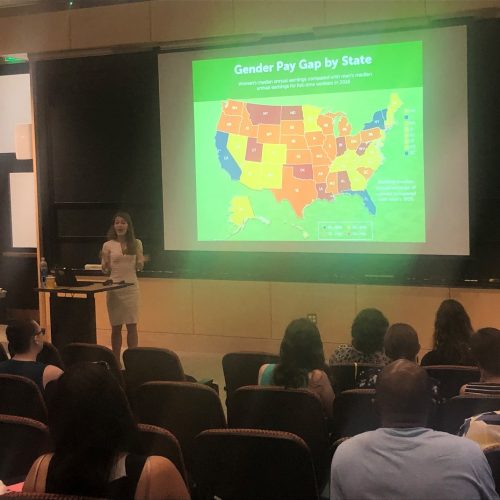Closing the Early Employment Gender Pay Gap
Career Advising & Professional Development (CAPD) welcomed Siri Chilazi, a research fellow with Harvard’s Women and Public Policy Program, to campus for a talk on the gender pay gap. Chilazi’s three part lecture highlighted the root cause and definition of the gender pay gap, and offered strategies to help us to work towards permanently closing it. Throughout her lecture, she discussed the history of the gender pay gap and revealed that it currently exists worldwide, at an average of about 18%. While the gap has narrowed over the past 20 years, there is still significant work to be done. According to the AAUW, the gender pay gap was 40% in 1980; today, the gap sits at 20%. If this downward trend continued at this rate, the gender pay gap could be closed by 2059. However, since 2000, the gap has stalled, and this, according to Chilazi, means that pay equality will not be reached until 2106.

Siri Chilazi speaks to members of the MIT community during her gender pay gap talk. Photo Credit: Deborah Liverman
Chilazi discussed current trends across industries and employment fields. STEM fields currently have a 20% annual pay gap, which is in line with the national average. Chilazi revealed that women are negotiating more, however they do not receive the same increases as men do. Furthermore, women sometimes experience a backlash due to gender stereotypes when they attempt to negotiate. According to Chilazi, women with advanced degrees experience a greater pay gap, as compared to those in lower skilled jobs, because of less transparency and formal pay structures for jobs requiring higher levels of education.
In an effort to continue narrowing the gender pay gap, Chilazi provided several actionable steps for staff who work with employers: utilizing data to help job seekers accurately benchmark their salary; eliminating gendered language in job ads; and stating salary ranges on job postings. Also, during interviews, employers can ask all candidates the same questions and use rubrics to evaluate them, to help curb unconscious bias in the interview process.
— Kendyl Maher-Trumble, CAPD
